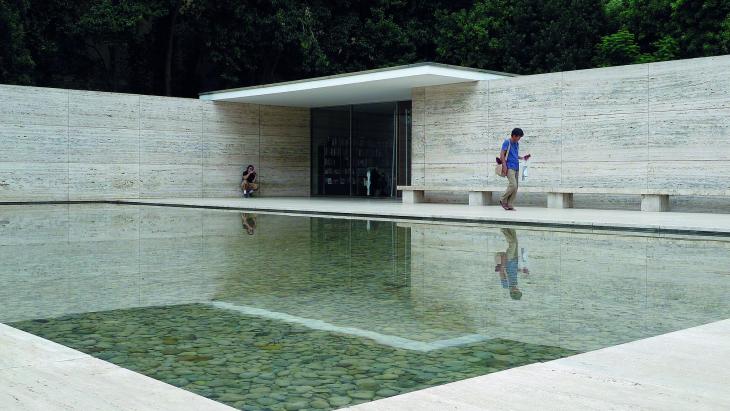Points of interest in the city
Design: craftsmanship in the post-industrial era

Barcelona, a design city
The opening of Barcelona's Design Museum in December 2014, which houses a collection of 70,000 items, is perhaps the clearest example of the fact that throughout its history Barcelona has been a city linked to design and objets d'art. The legacy that design has left the city over centuries is prolific: there are pieces of decorative art and industrial design, ceramics, a whole host of textiles and clothing, as well as graphic art. Barcelona has always been linked to design as an art form and a tool for social transformation.
Hundred-year-old benchmarks
Barcelona has always been a pioneer in the world of design. In 2003, one of the leading institutions in this field, the Foment de les Arts Decoratives (FAD) celebrated a centenary of work dedicated to a spirited championing of the value of designing as a modernising element and useful in everyday life. The city has always understood that designing is an ethical and aesthetic discipline. And Barcelona has always distinguished itself when it comes to major international artistic movements.
The relationship between designing and Barcelona goes back a long way. Not surprisingly, it was here that, in 1775, the first design school in Spain was set up, La Llotja, aimed at training artists who designed ornamental motifs for the emerging Catalan textile industry. Later it became a school of the plastic arts through which big names in the art world have passed, including Pablo Picasso, Joan Miró, Josep Maria Sert and Oscar Tusquets.
New horizons
Barcelona was a clear exponent of Art Nouveau and developed its own movement, Modernisme, that went beyond the boundaries of art to advocate a radical transformation of urban spaces and, by extension, life in the city. Modernisme, actually managed to free itself from its classical heritage and open up new horizons, incorporating modernity into all the artistic disciplines: from architecture to the decorative arts, it integrated design into spaces in a very natural way.
The first Universal Exposition in Barcelona in 1888, is an example of the innovative power of the city>almost 400,000 people visited the booming city, daring and creative, full of architects willing to reinvent urban traditions by integrating them with new materials. This is how the Catalan vault of brick or tile managed to coexist harmoniously with ceramics, cast iron and large metal structures. The curves, asymmetry, and naturalistic motifs of the mosaic were eloquent manifestations of an irreversible step towards the avant-garde, which arrived with the second International Exposition, in 1929.
The arrival of modern rationalism
Avant-garde architecture landed in Barcelona at the hands of GATPAC (the Group of Catalan Architects and Technicians for the Progress of Contemporary Architecture), with Josep Lluís Sert and Josep Torres Clave at the helm. The group, instigating the ideas of the Bauhaus school in the city, promoted the integration of design into architecture to facilitate social reform, but were interrupted by the outbreak of the Civil War. Sert's architecture still survives in many of the city's buildings, some of which are particularly significant, such as the Joan Miró Foundation, in Montjuïc, and the Pavelló de la República, a replica of a rationalist building Sert designed to represent Spain in the International Exposition in Paris in 1937. The space was once again planned for the Vall d'Hebron neighbourhood to celebrate the 1992 Olympic Games.
Emergence of contemporary design
Indeed, during the eighties and nineties, object design and creativity brought a new impetus to the city. Probably one of the best examples is the multidisciplinary artist Javier Mariscal, the designer of the Olympic mascot, who years before had designed one of the most famous logos of the city, the BAR CEL ONA.
BCN Design Tour
Barcelona Design Centre has developed an app for mobile phones and tablets that lets you delve into the culture of design in Barcelona: it is a map that shows the main premises, organisations, schools, hotels, bars, restaurants, fashion boutiques and bookshops to help you understand why Barcelona has become the world capital of design.


